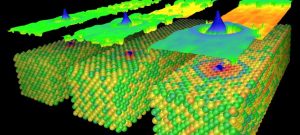
Condensed Matter Physics, often dubbed the science of the everyday world, holds the key to shaping the future of technology in profound ways. In this article, we delve into the intricate realms of this fascinating field and explore how it underpins various emerging technologies.
Introduction to Condensed Matter Physics
Condensed Matter Physics is a branch of physics that deals with the macroscopic and microscopic properties of matter in its solid and liquid states. It explores the behavior of materials when subjected to various conditions such as temperature, pressure, and electromagnetic fields.
Importance of Condensed Matter Physics in Technology
Quantum Computing
One of the most promising areas where condensed matter physics plays a pivotal role in the development of quantum computing. Unlike classical computers that use bits to process information, quantum computers utilize quantum bits or qubits, which can exist in multiple states simultaneously. This enables them to perform complex calculations exponentially faster than classical computers, revolutionizing fields such as cryptography, optimization, and drug discovery.
Nanotechnology
Nanotechnology, another frontier where condensed matter physics shines, involves the manipulation of matter on an atomic and molecular scale. By harnessing the unique properties exhibited by materials at the nanoscale, scientists can design novel materials with enhanced functionalities. This has applications in diverse areas including medicine, electronics, energy, and environmental remediation.
Understanding Quantum Mechanics
Basics of Quantum Mechanics
Quantum mechanics, the theoretical framework that governs the behavior of particles at the quantum level, forms the cornerstone of condensed matter physics. It describes phenomena such as wave-particle duality, quantum entanglement, and superposition, which defy classical intuition but are essential for understanding the behavior of materials at the atomic and subatomic scales.
Applications in Condensed Matter Physics
In condensed matter physics, the principles of quantum mechanics applied to study the electronic, magnetic, and optical properties of materials. By manipulating the quantum states of electrons and other particles within solids, researchers can engineer materials with tailored properties for specific applications, ranging from semiconductors for electronics to superconductors for energy transmission.
Role of Nanotechnology in Future Technologies
Introduction to Nanotechnology
Nanotechnology involves the manipulation of matter at the nanoscale, typically ranging from 1 to 100 nanometers. At this scale, materials exhibit unique properties that differ from their bulk counterparts, offering opportunities for developing novel devices and applications.
Various Fields

Nanotechnology finds applications across diverse fields, including healthcare (e.g., targeted drug delivery and diagnostics), electronics (e.g., nanoscale transistors and memory devices), energy (e.g., nanoscale solar cells and batteries), and environmental remediation (e.g., nanomaterial-based water purification systems). Its ability to revolutionize multiple industries makes it a key area of research and development.
Superconductivity: A Game Changer
What is Superconductivity?
Superconductivity is phenomenon observed in certain materials where they exhibit zero electrical resistance and expel magnetic fields when cooled below a critical temperature. This property, along with the ability to conduct electricity without loss, makes superconductors invaluable for various technological applications.
Applications in Electronics and Energy Transmission
Superconductors used in a wide range of applications, including high-speed maglev trains, MRI machines, particle accelerators, and power transmission lines. The development of high-temperature superconductors has expanded their practicality and opened up new possibilities for efficient energy transmission and storage.
The Future of Condensed Matter Physics
Predictions and Possibilities
As technology continues to advance, the role of condensed matter physics will become increasingly prominent. Predictions suggest breakthroughs in areas such as quantum computing, nanoelectronics, and materials science, leading to the development of more efficient and sustainable technologies.
Challenges and Opportunities
However, challenges such as scalability, cost, and environmental impact need to addressed to fully realize the potential of condensed matter physics in future technologies. Collaborative efforts between researchers, policymakers, and industry stakeholders are essential to overcome these hurdles and unlock the transformative power of condensed matter physics.
Conclusion
In conclusion, condensed matter physics serves the bedrock upon which future technologies are built. From quantum computing and nanotechnology to superconductivity, its principles and applications continue to drive innovation across various fields. By pushing the boundaries of scientific knowledge and technological capabilities, condensed matter physics paves the way for a more interconnected and sustainable future.
FAQs
What are some real-world applications of condensed matter physics?
Condensed matter physics has applications in diverse areas such as electronics, healthcare, energy, and transportation. Examples include semiconductors in electronic devices, superconductors in MRI machines, and nanomaterials in drug delivery systems.
How does quantum computing differ from classical computing?
Quantum computing harnesses the principles of quantum mechanics to perform computations using qubits, which can exist in multiple states simultaneously. This allows quantum computers to solve certain problems much faster than classical computers, offering significant advantages in areas such as cryptography and optimization.
What the challenges associated with nanotechnology?
Some challenges in nanotechnology include scalability, toxicity, and ethical considerations. Scaling up nanoscale materials and devices for commercial production can be technically challenging and costly. Moreover, concerns about the environmental and health impacts of nanoparticles need to be addressed through careful regulation and research.
How do superconductors benefit energy transmission?
Superconductors offer zero electrical resistance and can carry large currents without loss, making them ideal for energy transmission over long distances. By reducing energy losses during transmission, superconductors can improve the efficiency and reliability of power grids, enabling the integration of renewable energy sources and reducing carbon emissions.
What are some potential future developments in condensed matter physics?
Future developments in condensed matter physics may include the discovery of new exotic materials with novel properties, advances in quantum computing and communication technologies, and breakthroughs in energy storage and conversion. Research efforts focused on exploring the fundamental properties of matter and engineering materials for specific applications.









